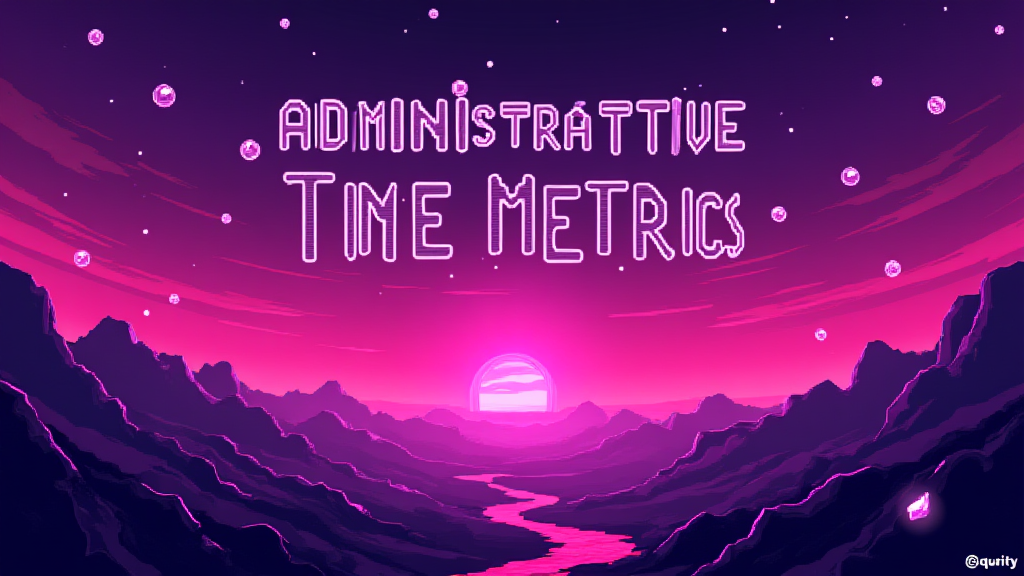Administrative Time Metrics: Measuring Efficiency

Published on: October 01, 2024
Administrative Time Metrics are quantitative measurements used to assess the time and effort spent on non-revenue generating activities within an organization. These metrics play a crucial role in evaluating operational efficiency, identifying bottlenecks, and optimizing resource allocation in Sales, Marketing, and Revenue Operations.
Understanding Administrative Time Metrics
In the fast-paced world of business operations, time is a valuable resource. Administrative Time Metrics help organizations track and analyze how much time employees spend on various administrative tasks, such as:
- Data entry and management
- Report generation and analysis
- Internal communications and meetings
- Documentation and paperwork
- System maintenance and updates
By monitoring these metrics, companies can gain insights into their operational efficiency and identify areas for improvement. 📊
Importance in Sales, Marketing, and Revenue Operations
Administrative Time Metrics are particularly relevant in Sales, Marketing, and Revenue Operations for several reasons:
- Resource Optimization: Helps allocate personnel and resources more effectively
- Process Improvement: Identifies inefficient processes that consume excessive time
- Productivity Enhancement: Enables teams to focus more on revenue-generating activities
- Cost Reduction: Assists in reducing overhead costs associated with administrative tasks
Key Administrative Time Metrics
Some essential Administrative Time Metrics include:
| Metric | Description |
|---|---|
| Administrative Time Ratio | Percentage of total work hours spent on administrative tasks |
| Task Completion Time | Average time taken to complete specific administrative tasks |
| Automation Rate | Percentage of administrative tasks that have been automated |
| Administrative Cost per Employee | Total administrative costs divided by the number of employees |
Practical Applications and Examples
Administrative Time Metrics can be applied in various scenarios:
- Sales Team Efficiency: Tracking time spent on data entry vs. client interactions
- Marketing Campaign Management: Measuring time allocated to reporting vs. creative tasks
- Revenue Operations Optimization: Analyzing time spent on system maintenance vs. strategy development
Challenges and Best Practices
While Administrative Time Metrics offer valuable insights, there are challenges to consider:
- Accurate time tracking can be difficult and may require employee buy-in
- Over-emphasis on metrics might lead to neglecting quality for speed
- Some administrative tasks, though time-consuming, may be critical for compliance or risk management
To overcome these challenges, consider the following best practices:
- Implement user-friendly time tracking tools
- Balance quantitative metrics with qualitative assessments
- Regularly review and update metrics to ensure relevance
- Involve employees in the process of identifying improvement areas
Implementing Administrative Time Metrics
To effectively implement Administrative Time Metrics in your organization:
- Identify key administrative tasks specific to your operations
- Set baseline measurements and establish realistic targets
- Invest in appropriate time tracking and analytics tools
- Provide training and support to ensure accurate data collection
- Regularly analyze results and take action on insights gained
By leveraging Administrative Time Metrics, organizations can streamline their operations, boost productivity, and ultimately drive better business outcomes. 🚀
Questions to Consider
As you think about implementing Administrative Time Metrics in your Sales or Marketing stack, ask yourself:
- What are the most time-consuming administrative tasks in our current processes?
- How can we leverage technology to automate repetitive administrative tasks?
- What impact would reducing administrative time have on our team's productivity and job satisfaction?
- How can we balance the need for accurate administrative work with the goal of minimizing time spent on these tasks?
- What key performance indicators (KPIs) should we track alongside Administrative Time Metrics to get a holistic view of our operational efficiency?

















